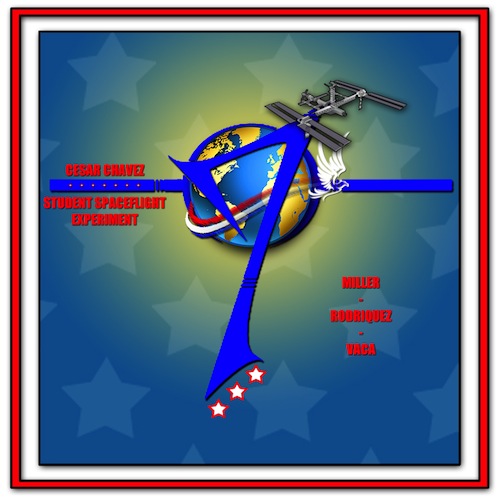The Student Spaceflight Experiments Program (SSEP) is about inspiring America’s and Canada’s next generation of scientists and engineers, and engaging entire communities in the process. It is a national program delivered at the local level, with student teams across a community designing and proposing real microgravity experiments to fly in orbit as the core activity. But community-wide engagement, and cross-disciplinary learning are also cornerstone objectives in the context of the embraced Learning Community Model for STEM education.
In this spirit, each community participating in SSEP can fly up to two Mission Patches to the International Space Station. Each Mission Patch selected for flight — a 3.5-inch x 3.5-inch graphic design on paper – is the result of a design competition held in the community and engaging at least 100-200 students.
The mission patch competitions foster community-wide awareness and engagement in the Student Spaceflight Experiments Program – an initiative that takes students, teachers, and the community at large to the space frontier through immersion in an authentic research experience. After the flight, the Mission Patches are returned to the community and serve as enduring symbols of the community’s engagement in SSEP.
As a historical note, mission patches have been part of human spaceflight since the days of Project Mercury in the 1960s (see, e.g., this page at the NASA History Program Office). The SSEP Mission Patch competitions therefore allow communities to engage in another authentic aspect of the space program. From an education standpoint, the mission patch component of SSEP forges interdisciplinary connections between STEM fields and art and design, so that SSEP is a true STEAM (Science, Technology, Engineering, Art, and Mathematics) initiative.
Through the first 19 SSEP flight opportunities (through Mission 17 to ISS), 224,600 grade preK-16 students took part in the art and design competitions, and 195,000 Mission Patch designs were submitted by students.
Jump to:
Mission Patches on Mission 17 to the International Space Station page
Mission Patches on Mission 16 to the International Space Station page
Mission Patches on Mission 15 to the International Space Station page
Mission Patches on Mission 14 to the International Space Station page
Mission Patches on Mission 13 to the International Space Station page
Mission Patches on Mission 12 to the International Space Station page
Mission Patches on Mission 11 to the International Space Station page
Mission Patches on Mission 10 to the International Space Station page
Mission Patches on Mission 9 to the International Space Station page
Mission Patches on Mission 8 to the International Space Station page
Mission Patches on Mission 7 to the International Space Station page
Mission Patches on Mission 6 to the International Space Station page
Mission Patches on Mission 5 to the International Space Station page
Mission Patches on Mission 4 to the International Space Station page
Mission Patches on Mission 3 to the International Space Station page
Mission Patches on Mission 2 to the International Space Station page
Mission Patches on Mission 1 to the International Space Station page

